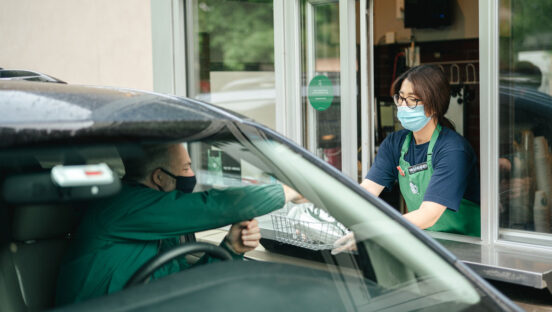When it comes to drive-thru, Shake Shack CEO Randy Garutti said the chain is “learning at a massive clip day in and day out.”
That’s because the 436-unit fast casual is still very early in its journey. There are 11 drive-thru restaurants in the system, nine of which opened in 2022. Most of them came in Q4 too. The units are more expensive to build at $2.4 million to $3 million, but AUVs are expected to exceed $4 million and operating profit margin should be just as strong—or even better—than company averages.
The brand plans to open 10-15 drive-thru restaurants in 2023.
“They’re more expensive than our core formats,” Garutti said at this year’s ICR Conference. “We’re going to spend mid 2 millions on average. Some will be in the low $2 [millions]. Some will be $3 [million], some might even be more if we decide to take a site as is that we think is great. And if you look at the history of Shake Shack, this is no different than how we’ve ever done them. Some of the best sites we’ve ever had will be there for decades to come because we chose to invest. That’s how we’re thinking about drive thru.”
READ MORE:
Shake Shack’s Big Bet on Drive-Thru is Paying Off
Shake Shack’s First Drive-Thru Reflects a New Era
Shake Shack develops using three prototypes. The first is the core format, a design built hundreds of times around the world. This prototype, built for around $2 million, will continue to lead growth. Then there are small format stores, ones that are under 3,000 square feet and target dense urban environments, food courts, and higher traffic suburban locations. Under this smaller format, the chain’s licensed business allows it to enter airports (23 stores worldwide), travel centers (four, with three to five opening in 2023), and resorts (the first licensed Shake Shack with a resort partner will come in the Bahamas at Atlantis).
These designs have proven to coexist in the same market without cannibalization. Shake Shack opened two restaurants in Orlando less than a mile apart—one drive-thru and one food court station. The smaller unit, opening in August 2021, earned $75,000 in average weekly sales and $3.9 million in AUV in 2022 and earned a roughly 35 percent store-level operating margin in Q4. Fewer than 15 percent of these customers are local. Meanwhile, the drive-thru, debuting in March 2022, gathered $86,000 in average weekly sales and a $4.5 million AUV in 2022 and a 20 percent store-level operating profit margin in Q4. More than 45 percent of drive-thru customers live within 10 miles.
“We’re getting $8.5 million of Shack burger sales in less than one mile,” Garutti said. “We think there are a lot of places around this country and around this world that we can do this. This is why you’re going to see different formats coming out of Shake Shack. And this drive-thru will allow us to capture different areas we may not have gone before.”
In the fourth quarter, Shake Shake saw same-store sales rise 5.1 percent year-over-year, including growth of 8.1 percent in urban areas and 2.5 percent in suburbia. Average weekly sales per store were $76,000, which is close to $4 million in annualized AUV. Operating profit margin was roughly 19 percent, which exceeded expectations. The chain opened 35 units in the quarter—the most it’s ever done—including 22 company-operated outlets and 13 licensed stores.
For fiscal 2022 overall, 69 restaurants opened, growing the footprint by 19 percent compared to 2021. Same-store sales increased 7.8 percent, breaking out to 14 percent for urban units and 2.7 percent for suburban locations. Operating profit margin in 2022 was about 17 percent.
A growing portion of overall sales are coming from digital. In 2022, Shake Shack racked up nearly $500 million in combined digital and kiosk sales, mixing 57 percent. That’s growth from $442 million (62 percent mix) in 2021, $329 million in 2020 (65 percent mix), and $147 million (26 percent mix) in 2019. The company said kiosks are its highest-margin channel. In stores where kiosks are present, 75 percent of sales come via kiosks or digital orders. The plan is to add kiosks in nearly all units by 2023; the brand is almost halfway there.
In 2023, Shake Shack expects to open about 65-70 restaurants (40 company-operated and 25-30 licensed). In Q1, same-store sales are projected to be mid-to-high single digits and profit margin is expected to be 16-18 percent.
“When you look at the fourth quarter, all the momentum is in the right direction, Garutti said. “And you look at the trends of some of the return to travel, work, events, are all the right things for Shake Shack’s momentum.”








